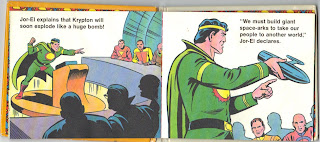by C.F.
published by Picture Box Inc. 2007
The 1996 Bartlett’s Roget’s Thesaurus supplies forty-seven interjections of wonder. Allow me mentally to insert them all here. Annnnd done.
This is really fucking great.
And I think I’m a pervert now.
I mean
I just read Johnny Ryan’s Prison Pit, in which a fuckface sucks himself off with his own slorge arm, and I thought
dude I would totally suck myself off if I too had a slorge arm, and then I read C.F.’s
Powr Mastrs and a gigantor jellyfish DPs a lady and boffs all over her loins and I totally almost got a boner.
For all that characters like Subra Ptareo may be on a quest and Mosfet Warlock may be a mad scientist, their interlocking stories (so far) don't read like the genre narratives of my youth beyond their fantastic trappings at all. Instead, they're stories about buying things and selling things, about twentysomethings (or at least twentysomething analogues) meeting new people and flirting with them, about getting stoned, about fucking and deceiving the people you fuck, about being moved to tears by the realization that you're actually good at what you've chosen to do with your life.
And in my cognitively deficient parsing, Mosfet Warlock is the crux of the comic. He first appears on page forty-seven in “Disfigured Leak” looking like a young nosferatu. And he waves at us. Hi, C.F. Then while he catches a nap, the ink from a painting snatches his mobile suit, which is a normal naked human guy shell. Mosfet wakes, sucks the inky stuff from the suit’s butt, splurts it out into a wacky bottle receptacle, packs it up into his briefcase, and goes for a stroll. We meet up again on page seventy-nine in “Tarkey Transfer.” Mosfet traps the “disaster of [his] blood” in a crate to keep it “stable and cold.”
So far I’m thinking this could be analogous to the artist struggling with his art over control of his humanity, sorta the art/madness shtick. Mosfet imprisons ink in a picture to keep if from infecting his mind. Or something.
On page 103 Pico Farad tells us the story of “Mosfet Warlock and the Mechlin Men.” This happens in Mosfet’s “early days” & his workroom is immediately interesting because it looks mostly like an in-real-life present-day house as opposed to the stark spartanism of chronologically current New China homes, and in contrast to the meticulous construction and appearance of the other structures in this book, it’s disorderly and dilapidated. Also I’m pretty sure it’s the first building in the book that has plants in it. Up until now, there’s been a clear delineation between the order/disorder of the inside/outside. With all the cracks and bugs and plants, it’s like Mosfet’s lab is being overrun.
Lemme quote some lines in full from Pico’s story, pages 105-107:
Mosfet labored endlessly in his magical laboratory. It was a place where the assumptions of the outside world were brought to task and annihilated. He was so consumed with weird power that he would not rest until he realized his imagination’s ultimate hopeless impossibility: to force the transmutation of dead flesh into a living metal. A warlock like Mosfet is always interested in doing the impossible, even at the cost of becoming deeply perverse. He could not help but become attracted to the depraved idea of death-reversal. When Mosfet had gone as far as he could in the lab, he would go outside and wander.
I’m not all that clear on exactly how the process works in C.F.’s pictures, but it seems like Mosfet collects goo from an (bee/wasp?) insect/chrysanthemum interaction, passes it through his gadgets, and squirts out some intestiney sausage-linky stuff. Then he does the wander thing. Then he meditates or whatever staring at the sun, morphs into an intestine sausage-linky thing with arms and a Mosfet head (I think it’s just a meditative dream, but maybe he actually does physically mutate, doesn’t matter), contemplates the night sky (this day/night could either relate to the inside/outside/order/disorder thing, or maybe just signify the passage of time), then spits out & embraces Tarkey, the inky stuff that will later slither out of a painting & try to steal Mosfet’s mobile suit (you know, from before). Tarkey’s face looks just like a Rorschach inkblot.
Mosfet & Tarkey return to the lab, Tarkey touches the chrysanthemums, they turn into gas, Mosfet funnels the gas into the container with the decaying corpses (I didn’t mention them yet -- they popped up earlier during the “transmutation of dead flesh into a living metal” part), the corpses transmogrify into spools that look like transformer bobbins, Mosfet plants them in the ground, they grow into Mechtembre (the Mechlin Men from the title of Pico’s story), Mosfet “overflow[s] with wonder at his success,” and the Mechlin Men drag another corpse to the lab so Mosfet can do it all again.
Phew.
So Tarkey/creativity is born of the natural world, but when it contacts/comments on that world, it changes/perverts/enhances it. This is a kind of id/ego/super-ego fuckfest, right?
Wikipedia tells me this about
the psychic apparatus: "The
id is the set of uncoordinated instinctual trends; the
ego is the organised, realistic part; and the
super-ego plays the critical and moralising role." That could make C.F.’s outside the id, the inside the ego, and Mosfet the super-ego? Or Tarkey is the id, Mosfet is the ego, and we the readers are the super-ego?
Or I’m full of shit? Even if am (let's just assume I am) laughably off-base, whatever, it’s totally fun to consider. And I haven't thought this hard about a comic in forever. Ever.
And okay fine I got a boner.














































